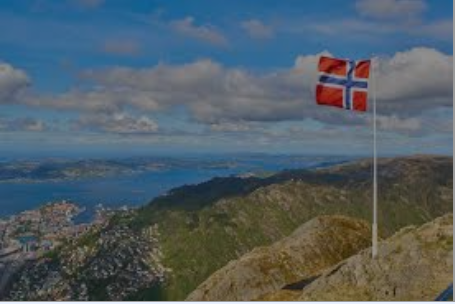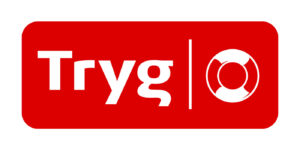Coronakrisen får en barskere økonomisk virkning i Norge end i Danmark og Sverige, skriver Nordea, der har lavet tre scenarier med et fald i økonomien på mellem 3 og 10 pct.
Uddrag fra Nordea:
Norway Macro: Three scenarios for the Norwegian economy
Large areas of the economy are under lockdown to contain the coronavirus. We take a closer look at three possible scenarios for the Norwegian economy. This year GDP growth in Norway’s mainland economy could land anywhere between -3% and -10%.
Note: This is the English version of Tre scenarioer for norsk økonomi which can be found here.
The authorities have imposed the most comprehensive restrictions since World War II. We are now in a state of emergency with an everyday life that most of us have never experienced before. The purpose of the measures is to avoid overloading the health care system and thus ultimately save lives. But the restrictions have dire economic consequences. Large parts of both the Norwegian economy and the global economy are now at a complete standstill. The authorities and the central banks have launched several rescue packages to help corona-hit businesses and to ensure that capital flows and the credit markets do not screech to a halt. However, these aid measures cannot stop economic activity in most countries from plunging but they help cushion the fall. At the same time, they mitigate the negative second-round effects on the economies.
Predicting economic trends these days is not only difficult – it is practically impossible. Developments are dependent on when the restrictions are lifted; not just in Norway but also in the rest of the world. Another crucial factor is how people will behave once the restrictions are lifted. Uncertainties are unusually rife. Our projections should thus not be considered as forecasts but as three possible scenarios among many.
Table: Growth and unemployment – three scenarios
Common assumptions
Based on a review on the sectors under lockdown and some of the spill-over effects of the anti-contagion measures both in Norway and globally, we believe that economic activity in the mainland economy at present and during the coming weeks will be about 15% lower than in a scenario without the coronavirus. Against this background, we have set up three possible scenarios for the Norwegian economy going forward. The difference between the scenarios will largely be determined by how long the authorities keep the anti-contagion measures in place and how people adjust once the measures are lifted. Our three scenarios for the Norwegian economy should be viewed in conjunction with the three associated scenarios for the global economy, see The global coronavirus recession. Lower global growth will impact oil prices and demand from Norway’s trading partners and thus also Norwegian oil activities and exports.
All scenarios assume that the Norwegian authorities will launch rescue packages in three phases. Phase 1 focused on income compensation for employees temporarily laid off, suspension and reduction of payments of taxes and duties and a string of lending facilities to keep businesses afloat. We are now in phase 2 where the focus is on covering the fixed costs of businesses whose revenues have plummeted or which are under lockdown. Additional packages to help businesses will most likely be launched in this phase. We assume that the size, nature and duration of the packages launched in phases 1 and 2 will keep most businesses from going bankrupt. However, having said that some businesses will still go under – and the longer the restrictions remain in place, the greater the likelihood of that happening. In addition, we have assumed that fiscal policy measures in phase 3 will provide broader stimulus to the economy when activity at some point has returned to more normal levels. Oil money spending in phase 3 will likely be higher, the longer the anti-contagion measures last and the harder the effects on the economy become. Also the key policy rate has been cut to close to zero. The expansionary fiscal and monetary policy will support the economy once the conditions for recovery are in place.
Baseline scenario
Our baseline scenario assumes that the measures against the spreading of the coronavirus will be enforced for a total of two months – from 12 March to mid-May before they are gradually phased out. We also assume that people will be more cautious and restrained for quite a while yet. In this scenario we assume that life will be back to some kind of “normal” by the end of the year.
In this U shaped scenario the mainland economy contracts by about 6% from 2019 to 2020. Activity will gradually recover, contributing to high growth in 2021, see chart 1. Still, activity will be a quite a bit lower at end-2021 than it would have been without the coronavirus, see chart 2 (relative to the forecasts in our January issue of Nordea Economic Outlook 1/2020). Registered unemployment, including employees temporarily laid off, which is currently above 12%, is estimated to rise to 15% quite rapidly, see chart 3. When the anti-contagion measures are phased out, many will probably quickly return to work, but in this scenario it will still take some time before unemployment declines. The average registered unemployment rate in 2020 is expected to surpass 6%. By end-2021 it should be just over 3%, roughly 1% point higher than before the outbreak of the coronavirus.
Economic developments in Norway are also reflected in our baseline scenario for the global economy. Global growth is estimated at -1% in 2020 before the activity level rebounds over the year and into 2021. A sharp drop in oil demand will thus contribute to keeping oil prices low well into 2021, and oil companies will have to scale back their investment budgets. As we saw in 2015/16, this will push economic growth in Norway lower also next year. But the assumed strong fiscal policy stimulus, weak NOK and low interest rates will contribute to keeping underlying quarterly growth next year in positive territory albeit below the trend rate.
A more pessimistic and a more optimistic scenario
It is not difficult to imagine more dramatic scenarios. In a more pessimistic scenario we assume that the current anti-contagion measures are kept in place over the summer until they are gradually phased out. In this scenario life does not return fully to normal until a vaccine becomes available, probably next summer. In this L shaped scenario, growth in the mainland economy this year could be -10% and unemployment will likely settle at a high level by Norwegian standards. A similar scenario for the global economy will entail low oil prices for a longer period and a steeper fall in oil investment than in the baseline scenario. Even very significant fiscal policy stimulus is unlikely to prevent lasting damage to the economy.
In a more optimistic V shaped scenario the authorities will gradually start to lift the restrictions after Easter and life will return to normal after the summer. Even in this positive scenario, activity in the mainland economy will fall by almost 3% this year, though. As economic activity gradually picks up again, unemployment will decline rapidly to a level only slightly higher than our estimate before the outbreak of the coronavirus. This scenario also assumes that the global economy recovers fairly quickly and that oil prices rise enough to prevent a very significant decline in oil investment.
Summary
The measures taken to contain the coronavirus do not only impact our everyday life – economic activity has also taken a severe blow. Based on three different scenarios we estimate that GDP growth in Norway’s mainland economy this year could land anywhere between -3% and -10%. The longer the anti-contagion measures are enforced, the weaker the development will be. Uncertainties are unusually rife and our scenarios far from cover all possible outcomes. The support measures that Norges Bank and the authorities have launched and will launch going forward cannot prevent the downturn but only cushion the impact. But they will underpin the economy once the conditions for recovery are in place at some point.
Chart 1. Sharp decline in growth
Chart 2. The recovery and long-term consequences depend on the duration of the measures
Chart 3. Sharp rise in unemployment












